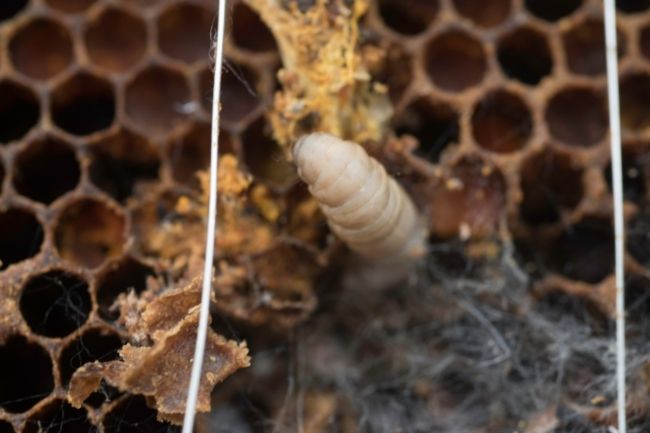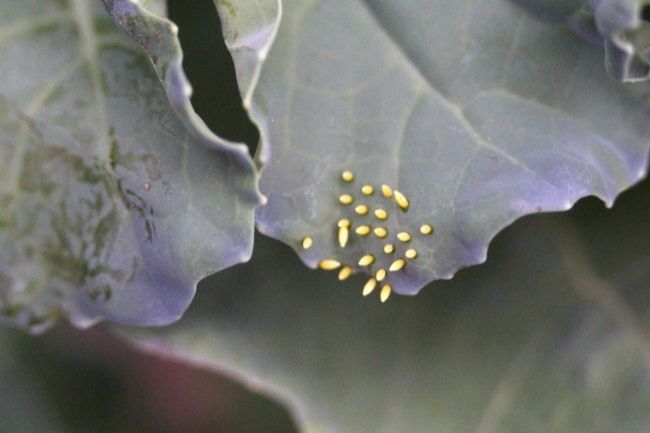Moths sexually reproduce, with a male and female mating to produce offspring. The male uses anal claspers to grasp the female and pass her a package of sperm that she will use to fertilize her eggs when she lays them.
Contents
How do moths mate?

The majority of moths fly during the night, though many species fly in the day, or during dusk and dawn. It is their nocturnal habits that have meant moths are often less colourful than butterflies as adults, as colour plays less of an important role. Many moth species will instead have colours and patterns that help them to remain camouflaged during the day, when they are vulnerable to predators.
| Life Stage | Description |
|---|---|
| Egg | The first stage of the moth’s life cycle. Moth eggs are usually laid on suitable host plants or substrates and hatch into larvae. |
| Larva | Also known as caterpillars, moth larvae are the feeding stage of the life cycle. They undergo multiple molts, growing in size and consuming plant material. |
| Pupa | After the larval stage, the caterpillar transforms into a pupa inside a protective cocoon. This is a stage of metamorphosis where major changes occur. |
| Adult | The final stage of the life cycle, the adult moth emerges from the pupa. It is the reproductive stage and typically has wings for flying and mating. |
| Behavior | Description |
|---|---|
| Mating | Adult moths engage in mating behavior to reproduce. They release pheromones or use visual cues to attract mates. |
| Courtship | Moths may perform specific courtship rituals, such as wing displays or aerial dances, to attract and select mates. |
| Egg-Laying | Female moths lay eggs on suitable host plants, often near or on the leaves. The number of eggs laid can vary depending on the species and environmental conditions. |
| Parental Care | Some moth species exhibit varying degrees of parental care, such as guarding the eggs or providing protection for the larvae. |
| Sexual Dimorphism | Moths may exhibit sexual dimorphism, where males and females have different physical characteristics or behaviors related to reproduction. |
Instead, most moths tend to rely heavily on pheromones to locate a mate. Pheromones are special chemicals, produced from glands usually located on the female’s abdomen, or on adapted scales on the moth’s wings. Both male and female moths produce pheromones, but it is usually the female that releases her pheromones to attract a male.
In order to detect these important signals, male moths have large plume-like antennae, which distinguish them from their butterfly relatives. The female will find a handy perch and release her pheromones into the air. Males will then flock in to male with her.
| Reproduction Strategy | Description |
|---|---|
| Semelparity | Some moth species exhibit semelparity, where individuals reproduce only once in their lifetime and die soon after mating and egg-laying. |
| Iteroparity | Other moth species show iteroparity, where individuals can reproduce multiple times during their lifetime, producing multiple generations. |
| Reproductive Diapause | Moths may enter a period of reproductive diapause, where their reproductive activities are temporarily suspended, often in response to environmental cues. |
| Host Plant Selection | Female moths select specific host plants for egg-laying, often choosing plants that provide suitable nutrition and protection for the developing larvae. |
However, not all moths use pheromones. A small number of moth species use acoustics to attract a mate. The yellow peach moth male emits a high-pitched call to attract in a female. Interestingly, this clever moth can also give off sounds that mimic a feeding bat, which can scare off rival males.
Finally, some males, such as the ghost moth, even show lekking behaviour. This is where several males display in one place to attract females. Once the females visit the lek, they can then decide, which male they like best and mate with him. In order to impress her, males flutter up and down, demonstrating their fitness.
Moth species tend to be more active during the summer when temperatures are more suitable for their survival, and food is more readily available. Mating can occur at any time, although spring and summer tend to be the main time of mating for most species. Mating times will align to ensure that eggs can hatch when plenty of food is available. Some eggs may hatch immediately, while others may remain dormant during the winter and hatch the next spring.
Once mates have located one another the female may required the male to prove his worth, through flight displays, or by chasing her down. Once she has decided he is worthy, they will mate by joining together at the ends of their abdomens. To hold on to the female, the male has anal claspers, to help grasp her. The male will then pass the female a package of sperm, known as a spermatophore.
The female will store this package until she is ready to lay her eggs, which may be immediately after mating, or could be in a few months. Male moths do not tend to live long after mating, and the females tend to die after having laid their eggs.
Also read: Do Butterflies Mate for Life? Eternal Love or…
What do moth larvae look like?

While the majority of people are very much more enamoured with butterflies than they are with moths, the fact is that moths are far more common than their colourful cousins. Across the world, there are around 160,000 moth species, compared with around 18,000 butterflies.
When it comes to separating moths from butterflies, however, there are more similarities than differences. Even their lifecycles are very much the same, with both moths and butterflies starting as an egg that hatches into a caterpillar or larvae. Therefore, while we may be inclined to think that every caterpillar we spot will become a beautiful butterfly, the majority of them will in fact become moths.
Moth caterpillars come in a wide range of shapes, sizes and patterns. Some, like the elephant hawkmoth caterpillar, try to disguise themselves as a more ferocious species, its eyespots causing predators to mistake it for a tiny snake. Others, such as the sycamore moth caterpillar, are covered in irritating hairs. A small number, like the monkey slug, have a truly bizarre look, covered in hair and curling tentacles.
Like butterflies, moths undergo a complete metamorphosis, meaning that their bodies change from their juvenile form to their adult one. This means that a rather drab looking moth can be an exciting and colourful caterpillar.
Caterpillars evolve their form for a variety of reasons. Some choose to try and hide by disguising themselves as something else, such as bird poo, a twig or even just blending their colours into their surroundings. This is because caterpillars are relatively immobile compared to their adult forms, which are able to fly away to escape predators.
However, not all caterpillars wish to fade away, some decide to stand out instead. This is usually because they have developed forms of defence, such as accumulating poisons in their bodies, or growing irritating hairs on their skin. They use bright colours and striking patterns to let predators know that eating them will not end well.
Also read: What are Butterfly Wings Made of? (The Anatomy Explained)
What do moth eggs look like?

Like their caterpillars, moth eggs can be highly varied. Most are small and either round, pointed or compressed. They can range in colour from white, to yellow or even green. Some can have textured outsides, such as ridges running down the egg, while others might be smooth.
Different moth species also choose to lay eggs in different locations, and in different quantities. Some may lay eggs individually, while others may lay dozens in one location. Female moths may also choose to lay eggs only on specific plants, the food plants that the caterpillars feed on, or less fussy species may lay them on any plants they come across.
The importance of moths
We have a tendency to praise butterflies while viewing moths simply as pests. While some moth species can be damaging to agriculture, the vast majority are highly important to our environment. Like butterflies, they are important pollinators, and because there are significantly more moths than butterflies it could be argued they are more important pollinators.
Moths are also an important food source for a vast number of species, from birds to bats to mammals. They are also an important indication of the health of our environment, once moths start to decline we know that the ecosystem is in trouble, and other species will soon be affected.
So perhaps it’s time we gave the moth its dues and learnt to love it just as much as we do the very similar butterflies.

